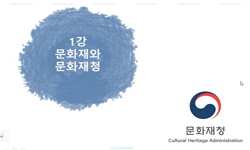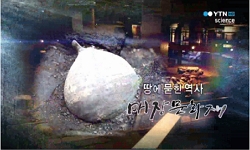The Japanese colonial authority investigated and institutionalized Korea’s cultural properties for the purpose of governance. This process was conducted by Japanese officials and scholars, and systematized after making some changes. The Reservation ...
http://chineseinput.net/에서 pinyin(병음)방식으로 중국어를 변환할 수 있습니다.
변환된 중국어를 복사하여 사용하시면 됩니다.
- 中文 을 입력하시려면 zhongwen을 입력하시고 space를누르시면됩니다.
- 北京 을 입력하시려면 beijing을 입력하시고 space를 누르시면 됩니다.

일제강점기 문화재 정책 형성과정 연구 : 위원회 구성과 목록 변화를 중심으로 = Study on the Formulation of the Cultural Property Policy during the Japanese Colonial Period -with the Focus on the Composition of the Committee and Changes in the Listing of Cultural Properties
한글로보기https://www.riss.kr/link?id=A105224618
-
저자
오춘영 (국립중앙박물관)
- 발행기관
- 학술지명
- 권호사항
-
발행연도
2018
-
작성언어
Korean
-
주제어
조선총독부 ; 문화재 ; 위원회 ; 세키노타다시 ; 구로이타가쓰미 ; Joseon Government-General ; Cultural property ; Committee ; Sekino Tadashi ; Guroita Gatsumi
-
KDC
900
-
등재정보
KCI등재
-
자료형태
학술저널
-
수록면
100-125(26쪽)
- DOI식별코드
- 제공처
- 소장기관
-
0
상세조회 -
0
다운로드
부가정보
다국어 초록 (Multilingual Abstract)
The Japanese colonial authority investigated and institutionalized Korea’s cultural properties for the purpose of governance. This process was conducted by Japanese officials and scholars, and systematized after making some changes. The Reservation Rule (1916) and the cultural properties designated in 1934 were actually the starting point for Korea’s current cultural property policy. In the view of lineup of ‘committee’ that consider all of cultural property and changing of ‘cultural property list’, this study discusses the cultural property policy implemented by Joseon’s Government-General, which can be summarized as follows. First, Joseon’s Government-General formed a committee (Preservation Society) to formulate the cultural property policy, and had the policy implemented by appointing Governor officials who accounted for more than half the total number of officials of the institution. Although some Koreans were concerned about this, they had no influence on the matter. Second, the cultural properties listed by Joseon’s Government-General are divided into three periods according to the lists. The compilation of the first list was led by Sekino Tadashi, who represented the grading system (1909~1916); while that of the second list (1917~1933) was led by Guroita Gatsumi, who represented listing (1917~1933). Guroita Gatsumi tried to erase Sekino Tadashi’s list by formulating the cultural property policy and the list - a situation that was revealed in the system and the actual contents of the list. The third list was made as a list of designated cultural properties in 1934. This list also reflected the results of Sekino Tadashi investigation of the important cultural properties at existing temples that had been excluded from the previous regulations (1934~1945). In this way, a basic framework for the listing of Korean cultural properties was established in 1934.
국문 초록 (Abstract)
일제는 그들의 통치목적을 달성하기 위하여 우리 문화재에 대한 조사와 제도화를 하였다. 이러한 과정은 일본인 관료와 학자들을 중심으로 진행되었으며, 몇 번의 변화를 거쳐 체계화 되었...
일제는 그들의 통치목적을 달성하기 위하여 우리 문화재에 대한 조사와 제도화를 하였다. 이러한 과정은 일본인 관료와 학자들을 중심으로 진행되었으며, 몇 번의 변화를 거쳐 체계화 되었고, 1916년에 제정된 「고적 및 유물 보존규칙」과 1934년에 지정된 문화재들은 현재 우리나라 문화재 정책의 시작점이 되었다. 이 글은 일제강점기에 조선총독부 주도로 진행된 문화재 정책을 문화재에 관한 전반을 심의하던 ‘위원회’의 인원 구성과 ‘문화재 목록’의 변화상이라는 관점에서 살펴보았다. 이러한 사항들은 다음과 같이 요약된다. 첫째, 조선총독부는 문화재 정책을 입안하고 결정하기 위한 심의기구로 ‘위원회(보존회)’를 두었는데, 제도와 인적 구성 면에서 조선총독부 관료를 과반 이상 두도록 하여 조선총독부의 정책이 관철되도록 하였다. 이 속에서 조선인은 극소수가 참여하였는데, 그들마저 형식적인 구색 맞추기였다고 볼 수 있다. 둘째, 조선총독부가 조사하여 목록화한 문화재는 목록화 계기에 따라 크게 세 시기로 구분된다. 첫 번째 목록(1909~1916)은 등급제로 대표되는 세키노타다시에 의해 주도되었고, 두 번째 목록(1917~1933)은 대장법으로 대표되는 구로이타가쓰미에 의해 주도되었다. 구로이타가쓰미는 문화재 제도를 입안하고 목록을 공식화 하면서 세키노타다시의 영향에서 멀어지려 하였는데, 이러한 정황이 제도와 실제 목록 내용에서 드러나고 있음을 확인하였다. 세 번째 목록(1934~1945)은 1934년 지정문화재 목록으로 만들어졌는데, 이 단계에서는 세키노타다시의 조사 성과도 반영이 되었으며, 종전의 규정에서 제외되었던 현존사찰의 중요 문화재도 포함이 되었다. 이렇게 1934년을 기점으로 현재 우리나라 문화재 목록의 기본적 체계가 만들어졌다.
동일학술지(권/호) 다른 논문
-
영종도 중산동 신석기시대 토기의 광물 및 화학조성과 제작특성 해석
- 국립문화재연구원
- 이찬희
- 2018
- KCI등재
-
캄보디아 앙코르 유적에서 식생정비 사업의 양상과 특징에 관한 고찰
- 국립문화재연구원
- 이재용
- 2018
- KCI등재
-
- 국립문화재연구원
- 주빈
- 2018
- KCI등재
-
- 국립문화재연구원
- 홍병화
- 2018
- KCI등재




 RISS
RISS







